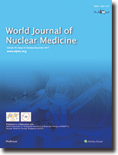
World Journal of Nuclear Medicine
Scope & Guideline
Unlocking the Potential of Nuclear Medicine for All
Introduction
Aims and Scopes
- Diagnostic Imaging Techniques:
The journal emphasizes the development and application of various imaging modalities such as PET, SPECT, and CT, with a focus on their use in diagnosing a wide range of conditions including cancer, cardiac diseases, and neurological disorders. - Therapeutic Applications:
Research articles often delve into the therapeutic use of radionuclides, particularly in treating malignancies through targeted radionuclide therapy, which is a growing area within nuclear medicine. - Innovations in Radiopharmaceuticals:
The journal highlights advancements in radiopharmaceutical development, including novel tracers for PET and SPECT imaging, and discusses their implications for improving diagnostic accuracy and treatment outcomes. - Clinical Case Studies:
The publication features detailed case studies that illustrate unique presentations of diseases, the challenges in diagnosis, and the role of nuclear medicine in patient management. - Multimodality Imaging Approaches:
There is a consistent focus on combining different imaging techniques (like PET/MRI) to enhance diagnostic capabilities and provide comprehensive evaluations of complex conditions. - Artificial Intelligence in Nuclear Medicine:
The journal explores the role of AI in improving imaging analysis, optimizing treatment plans, and enhancing the precision of nuclear medicine practices.
Trending and Emerging
- Theranostics:
There is a marked increase in publications focusing on theranostic approaches that combine diagnostics and therapeutics, particularly in oncology, highlighting the potential for personalized treatment strategies. - Integration of AI and Machine Learning:
The use of artificial intelligence and machine learning techniques in imaging analysis and diagnostics is gaining momentum, reflecting the trend towards enhancing accuracy and efficiency in nuclear medicine. - Multimodal Imaging Technologies:
Emerging themes include the increasing application of multimodal imaging techniques, such as PET/MRI, which provide comprehensive insights into disease processes and improve diagnostic capabilities. - Nuclear Medicine in Rare and Complex Diseases:
The journal is seeing a rise in studies addressing the role of nuclear medicine in diagnosing and treating rare and complex diseases, indicating a broader scope of application for nuclear medicine. - Patient-Centric Research and Outcomes:
There is a growing emphasis on research that evaluates patient outcomes following nuclear medicine interventions, reflecting a shift towards patient-centered care and evidence-based practice. - Global Health Perspectives in Nuclear Medicine:
Emerging focus on the challenges and advancements in nuclear medicine within developing countries, addressing access to technology, training, and the implementation of practices that are culturally and economically appropriate.
Declining or Waning
- Traditional Imaging Techniques:
There appears to be a waning focus on traditional nuclear imaging techniques without the integration of advanced modalities, as newer technologies and hybrid imaging approaches gain traction. - Basic Research on Radionuclide Mechanisms:
Research centered on the fundamental mechanisms of radionuclide action has decreased, possibly overshadowed by more applied clinical studies and innovations in therapeutic applications. - Generalized Case Reports:
The frequency of generalized case reports that do not contribute significantly to novel insights or advancements in the field has diminished, as the journal increasingly prioritizes cases that offer clinical relevance and innovation. - Historical Reviews of Nuclear Medicine:
The publication of historical reviews regarding the evolution of nuclear medicine practices has decreased, indicating a shift towards current and future-oriented research.
Similar Journals

Tomography
Transforming the landscape of medical imaging and diagnostics.Tomography is an esteemed peer-reviewed journal published by MDPI, focusing on a broad spectrum of topics related to medical imaging and diagnostics. Launched in 2015, this Open Access journal serves as a vital platform for researchers, professionals, and students in the fields of medicine, radiology, nuclear medicine, and imaging. With an impressive impact factor reflecting its relevance, the journal has achieved a quartile ranking of Q2 in both Medicine (Miscellaneous) and Radiology, Nuclear Medicine, and Imaging as of 2023. Renowned for disseminating high-quality research, Tomography welcomes original research articles, reviews, and technical notes, fostering innovation and collaboration within the scientific community. Housed in Basel, Switzerland, the journal aims to bridge the gap between fundamental research and clinical application, appealing to a diverse readership eager to advance the field of medical imaging.

Chinese Journal of Academic Radiology
Advancing Radiological Science through Innovative ResearchChinese Journal of Academic Radiology is a leading publication in the field of Radiology, Nuclear Medicine, and Imaging, published by SpringerNature. With an ISSN of 2520-8985 and E-ISSN 2520-8993, the journal aims to bridge the gap between academic research and practical application in radiological sciences. Recognized for its contributions to the advancement of imaging technology and patient care, it currently holds a Q3 quartile ranking for 2023. The journal has a commitment to sharing innovative research findings that address pressing challenges in the field, thereby fostering collaboration and knowledge exchange among researchers, professionals, and students. Although it does not currently offer open access options, the journal's comprehensive reviews and high-quality research articles present a significant resource for those seeking to deepen their understanding of radiological practices and innovations. The Chinese Journal of Academic Radiology continues to play a vital role in shaping the future of radiological science through rigorous scholarship and global discourse.
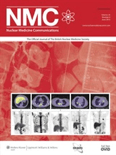
NUCLEAR MEDICINE COMMUNICATIONS
Exploring the Depths of Nuclear Medicine ResearchNUCLEAR MEDICINE COMMUNICATIONS is a prestigious academic journal published by Lippincott Williams & Wilkins, focusing on the multifaceted field of nuclear medicine and its applications in diagnostics and therapy. With a solid history spanning from 1980 to 2024, this journal provides a platform for peer-reviewed research articles, clinical studies, and innovative techniques that enrich the knowledge base within the fields of {{medicinal applications, patient care, and imaging technology}}. Currently classified in the Q3 quartile for both Medicine (Miscellaneous) and Radiology, Nuclear Medicine, and Imaging, the journal reflects its commitment to advancing healthcare practices. Although it does not offer open access options, its accessibility through reputable institutions promotes scholarly exchange among researchers, professionals, and students alike. The critical insights provided in NUCLEAR MEDICINE COMMUNICATIONS are essential for those dedicated to enhancing patient outcomes through cutting-edge nuclear medical technologies.

Imaging
Empowering Collaboration in Medical ImagingImaging, published by AKADEMIAI KIADO ZRT, is an esteemed open-access journal dedicated to the field of medical imaging, established in 2020. With an E-ISSN of 2732-0960 and based in Budapest, Hungary, this journal provides a vital platform for the dissemination of cutting-edge research and advancements in imaging techniques, especially in the realms of radiology, nuclear medicine, and ultrasound technology. While currently positioned in the Q4 category across multiple medical specialties, the journal continues to strive for improvements in visibility and impact, contributing to the evolving discourse in medical imaging. The journal aims to facilitate an inclusive and collaborative environment for researchers, professionals, and students, inviting them to share their findings and insights to enhance the field's development. With open-access availability since its inception, Imaging ensures free and easy access to its content, fostering a greater understanding and appreciation of innovative imaging practices worldwide.

Revista Espanola de Medicina Nuclear e Imagen Molecular
Exploring the Future of Imaging in HealthcareRevista Española de Medicina Nuclear e Imagen Molecular, published by Elsevier España SLU, stands as a vital resource in the field of Radiology, Nuclear Medicine, and Molecular Imaging. With an ISSN of 2253-654X, this journal is committed to disseminating high-quality research and advancements in clinical practices, aiming to bridge the gap between theoretical research and application in healthcare. Operating since 2012, it features a robust archive of peer-reviewed articles and case studies, although it currently holds a Q4 ranking in the Scopus category, indicating significant potential for growth and influence within the academic community. The journal is indexed in Scopus, with a rank of 255 out of 333, placing it in the 23rd percentile, which underlines the need for increased contributions from researchers eager to enhance its standing. While it is not an open-access journal, its availability through libraries and institutions ensures that a wide audience can access critical findings and innovations in the rapidly evolving field of nuclear medicine. As we look towards the convergence period from 2012 to 2024, Revista Española de Medicina Nuclear e Imagen Molecular aspires to fortify its role as a cornerstone for collaboration and advancement in nuclear imaging and radiology.

EUROPEAN RADIOLOGY
Shaping the Future of Medical ImagingEUROPEAN RADIOLOGY, published by SPRINGER, stands as a prestigious international journal in the field of radiology, nuclear medicine, and imaging, with an impressive impact factor that underscores its significance among peers. With an ISSN of 0938-7994 and an E-ISSN of 1432-1084, this journal provides a platform for cutting-edge research and advancements in medical imaging from 1991 to 2024. Recognized as a Q1 journal in both general Medicine and the specialized Radiology category by 2023, EUROPEAN RADIOLOGY ranks an impressive #17 out of 333 in its field according to Scopus, placing it in the 95th percentile. While it does not currently offer Open Access options, the journal remains essential reading for researchers, professionals, and students striving to stay at the forefront of developments in diagnostic imaging and related technologies. By contributing to a comprehensive understanding of radiological practices, EUROPEAN RADIOLOGY plays a crucial role in shaping the future of medical diagnosis and patient care.
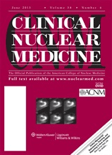
CLINICAL NUCLEAR MEDICINE
Elevating Standards in Nuclear Medicine ResearchCLINICAL NUCLEAR MEDICINE is a premier journal dedicated to the field of nuclear medicine, published by Lippincott Williams & Wilkins. With a history of excellence since its inception in 1978, the journal serves as a vital resource for researchers, healthcare professionals, and students seeking to deepen their understanding of this rapidly evolving discipline. The journal holds a commendable Q2 ranking in both Medicine (miscellaneous) and Radiology, Nuclear Medicine and Imaging, reflecting its significant impact on advancing clinical practices and research. While currently not offered as an open-access publication, CLINICAL NUCLEAR MEDICINE ensures rigorous peer review and high-quality publications, contributing to the broad dissemination of cutting-edge studies and reviews. With its comprehensive scope encompassing both diagnostic and therapeutic nuclear medicine applications, researchers around the globe turn to this journal to stay informed and inspire innovations in patient care for the years leading up to 2024 and beyond.
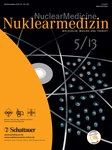
NUKLEARMEDIZIN-NUCLEAR MEDICINE
Connecting Research and Clinical Excellence in Nuclear Medicine.NUKLEARMEDIZIN-NUCLEAR MEDICINE is a prestigious journal published by Georg Thieme Verlag KG, focusing on pivotal advancements in the fields of Nuclear Medicine, Radiology, and Imaging. Established in 1959, this journal has served as a critical platform for disseminating innovative research, reviews, and clinical guidelines until its anticipated convergence in 2024. With an ISSN of 0029-5566 and an E-ISSN of 2567-6407, NUKLEARMEDIZIN is acknowledged in the academic community as a Q3 category journal within Medicine (miscellaneous) and Radiology, Nuclear Medicine, and Imaging as of 2023, highlighting its ongoing contribution to the interdisciplinary dialogue in healthcare. Although the journal does not currently offer open access, it remains accessible to professionals and students through various academic databases, ensuring that cutting-edge knowledge in this growing field is shared widely. Researchers interested in the latest methods and technologies in Nuclear Medicine will find NUKLEARMEDIZIN a valuable resource for enhancing their work and understanding the complexities of modern imaging modalities.
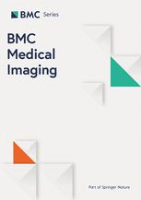
BMC MEDICAL IMAGING
Empowering Researchers and Clinicians in Medical Imaging.BMC Medical Imaging is a premier open-access journal dedicated to advancing the field of radiology, nuclear medicine, and imaging technologies. Published by BMC in the United Kingdom, this journal serves as a vital resource for researchers, clinicians, and students, fostering a collaborative environment for sharing innovative findings and methodologies in medical imaging. With a commendable impact factor and an impressive Scopus ranking within the top 35% of its category, BMC Medical Imaging provides a platform for high-quality research to be disseminated widely and freely since its inception in 2001. The journal aims to cover a diverse array of topics, from advanced imaging techniques to their clinical applications, enhancing the understanding and effectiveness of diagnostic practices. By contributing to the body of knowledge and facilitating open access to research, BMC Medical Imaging plays a pivotal role in shaping the future of medical imaging and improving patient care.

Nuclear Medicine and Molecular Imaging
Innovative Insights for Tomorrow's DiagnosticsNuclear Medicine and Molecular Imaging, published by SPRINGER HEIDELBERG, stands as a pivotal platform in the interdisciplinary field of radiology and nuclear medicine, focusing on innovative research and developments from 2010 to 2024. With its ISSN 1869-3474 and E-ISSN 1869-3482, this journal aims to disseminate advanced studies that explore the diagnostic and therapeutic applications of nuclear medicine technologies. Operating from Germany, it has positioned itself in the Q3 category within the Radiology, Nuclear Medicine and Imaging sector, showcasing its relevance among peer journals, with a Scopus rank of #204 out of 333. This journal not only serves as an essential resource for researchers and practitioners eager to stay abreast of modern methodologies and findings but also underscores the crucial advancements in molecular imaging techniques. Although currently not an open-access journal, it doesn't detract from its mission to promote knowledge exchange among academia and the medical community, thus paving the way for innovative solutions and improved patient care in nuclear medicine.